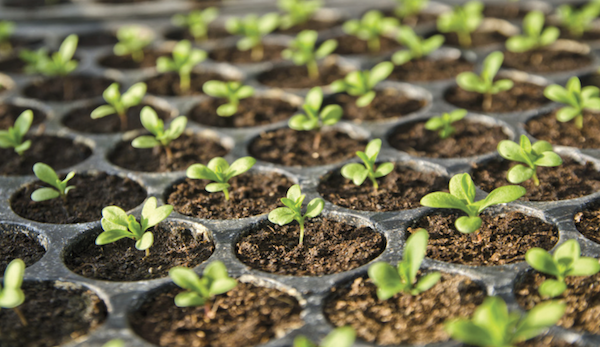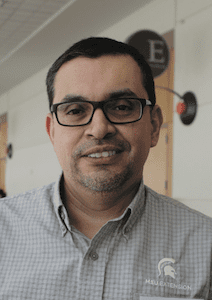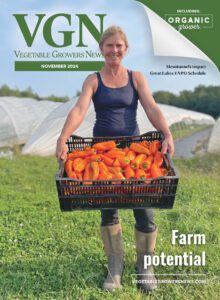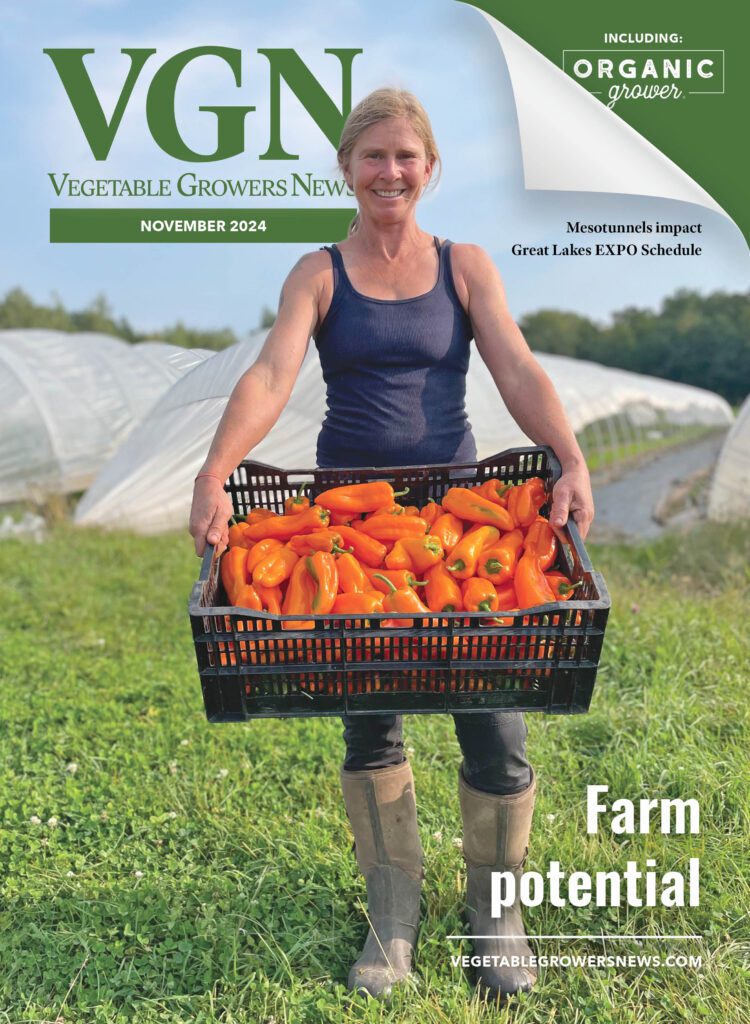
Apr 1, 2022Plan wisely to produce transplants
The goal is simple when growing transplants: grow high-quality seedlings that can tolerate environmental challenges at transplanting.
Plug seedlings should be strong, uniform, compact, free of buds and flowers and have a large stem diameter and dark green foliage.
“Most importantly, you want them to have a well-developed root system,” said Roberto Lopez, associate professor in Michigan State University’s Department of Horticulture.
Lopez talked about producing high-quality transplants at the 2021 Great Lakes Fruit, Vegetable & Farm Market EXPO held in Grand Rapids, Michigan.


“Should you raise your own transplants or buy them?” Lopez asked. “If you don’t have time to pay attention to detail, you should buy them.”
Seed must be tested for vigor, uniform emergence, germination rate and genetic purity.
“Make sure the seeds came from a trusted source,” Lopez said.
Coated seed, pelletized seed and primed seed are all options. Coated seed has been treated with fungicides, insecticides or micronutrients. Pelletized seed has a coating added that’s thick enough to change the seed’s shape and is generally the choice for automated planting. Primed seed has been moistened, allowed to develop for a short time and then dried again.
“Primed seed allows you to germinate at a range of temperatures, but the seeds are not as long-lived,” Lopez said. “You’ll want to use them right away.”
The first rule of seed storage is each 1% reduction in seed moisture content wdoubles the life of the seed. Each 9° F decrease in temperature also doubles the seed’s life.
Never store seeds in a greenhouse.
Store them in a refrigerator, freezer or chamber at a low relative humidity and low seed moisture content.
“Make sure you keep them in the original packing if you can,” Lopez said. Shelf life is reduced once the seed package is opened.
Choosing between open flat seeding or one of the many choices of plug trays is another decision. Open flat seeding is simple, and the trays are meant to be reused. It also requires more labor and produces slower growing, less uniform, later flowering plants that are more subject to root shock.
Plug trays allow for mechanized planting and transplanting, and shorter production and longer holding times. They have less disease spread and produce higher quality plants. However, the plug size restricts water drainage, the cells dry out quickly and the seedlings can stretch to avoid shading.
The number of cells in a plug tray – and therefore cell size – varies greatly.
Deeper cells drain better, but the seedlings take longer to root in them. Square cells are better than round so the roots don’t start circling.
“A tapered plug cell is really important,” Lopez said, so the transplants come out of the plugs easily.
Fill the flats with a well-drained, sterile media that has a pH between 5.5 to 5.8 and an EC (electrical conductivity) of less than 0.6.
“If you’re using compost, make sure it’s properly decomposed and know the nutrient content,” Lopez said. “With a soilless substrate, you must add moisture before transplanting.”
Too much moisture and air pockets will form during filling and the seeding equipment won’t work right. Too little moisture and there will be too much dust filling in air spaces.
Fill the trays uniformly and don’t pack or nest trays on top of the substrate.
“You want to loose-fill with substrate, water it a little to let the substrate settle in, and refill the cell,” Lopez said.
Dibbling creates a depression in the surface of the cell’s substrate for the seed. The depression must match the seed size and tray.
“The dibble transplanter makes an undulation in the substrate,” Lopez said. “Be careful not to use too much pressure because it could lead to compaction.”
Hand seeding may be required for unique seed shapes or for small seeds.
“If the seed is small, you’re going to have to look at hand seeding,” Lopez said.
Automation is much faster, but more than one seeder may be needed for different types of seed. Be sure to know the automatic seeder’s capacity. In general, the larger the seed, the more covering it needs. A rule of thumb when covering seed is to cover them to a depth of one-quarter the length of the seed. Cover them too much and you can smother the seed and inhibit germination.
“Covering is to reduce moisture loss,” Lopez said. A challenge is that not all seeds should be covered. “Make sure you know which ones need to be covered and which ones don’t,” Lopez said.
Arugula, basil, cucumber, dill, parsley, oregano, sage, squash and thyme require a normal amount of covering. Brussels sprouts, cabbage, cauliflower, Chinese cabbage, collards, eggplant, kale, kohlrabi, leeks, pepper and tomato should be lightly covered. Do not cover lettuce and savory because they need light to germinate.
Mist or water the seeds after seeding with warm water of about 70 ̊ F to settle the seed in.
“This is really difficult,” Lopez said. “How many people have water that’s 70 ̊ F? You can use cooler water, but germination of some genera will suffer because of it.”
Moisture, light and oxygen all factor into germination success, but substrate temperature is key. Be sure to monitor substrate temperature and not just the air temperature.
“A heat mat or root zone heating is really great,” Lopez said.
Substrate temperature is also affected by water temperature, light, the type of media, plastic color and air temperature. High-tech germination chambers or rooms are the solution to many of these issues for large growers. For smaller growers, germination carts, a small germination room or a tent in the greenhouse can work well.
“Don’t try to grow transplants of all the different vegetables because you’re not going to have the optimal conditions for all of them,” Lopez said.
– Dean Peterson, VGN correspondent














